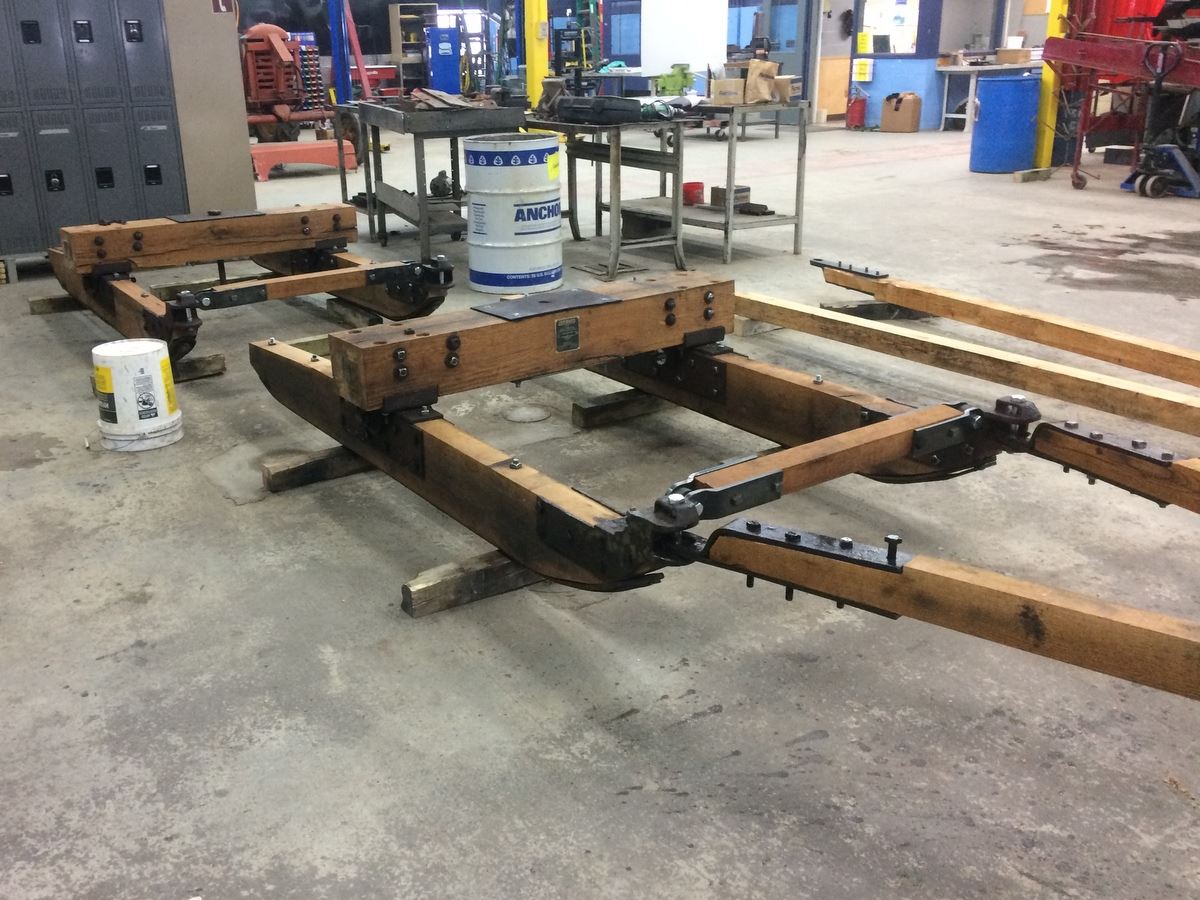
PRESQUE ISLE, Maine — A group of students at the Presque Isle Regional Career and Technical Center recently helped restore a 1920s era logging sled that will be used in conjunction with a steam-powered log hauler on display at the Maine Forest & Logging Museum in Bradley.
Students in the farm mechanics and building trades programs spent part of the past few months working to restore and install iron fittings and shape heavy oak timber to recreate a sled that was hauled behind steam and gasoline powered Lombard log haulers.
Invented and patented in 1901 by Alvin Lombard of Waterville, the Lombard log hauler is credited with being the first commercial tracked vehicle and could haul up to 300 tons of logs on iced winter logging roads during the 1920s and 1930s, according to the Maine Forest & Logging Museum.
Lombard built 83 steam-powered haulers in Waterville before switching to gasoline power, and two are on display at the museum. The museum had a donated collection of iron fittings and had been looking for an opportunity to recreate one of the sleds for use during living history events.
Terry Harper, drafting and engineering instructor at the CTE center, is a volunteer with the Maine Forest & Logging Museum and was talking with others at the museum about those iron fittings one day last spring.
“We decided it would be a decent project” for the CTE students, he said.
Volunteers at the museum milled out the timber from a large oak tree that was knocked down in a windstorm last year, and the wood and iron fittings were brought to Presque Isle last fall, Harper said.
Twenty eight students worked on the project with building trades instructor Spencer Bragan and farm mechanics instructor Darrel Espling. Since some key parts were missing, Haines Manufacturing in Presque Isle fabricated and donated the missing pieces, Harper said.
The students worked on the project from before Thanksgiving until early January, cutting out the sled runners, removing rusted bolts and fasteners and then assembling the sled, which is comprised of two attached bobsleds, to make what was known in the old days as a two-sled rig, Harper said.
The completed sled will join the Lombard log hauler exhibit at the museum, which will be run during future living history events, Harper said.
The building trades and farm mechanics students work on a variety of hands-on and practical projects, during the school year through the center’s live work policy. These projects offer students a unique experience, Harper said.
“It’s gives them a connection with the past, the way things used to be done, and appreciation for the work that used to be put into this. One logging operation back in the 1920s had over 900 of these sleds, all of these made by hand,” Harper said.
“Working on real projects such as this is not theoretical. They know it has a purpose and they take a lot of pride in it. It helps them learn and apply a variety of skills and be job ready on day one.”







